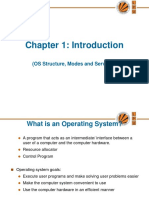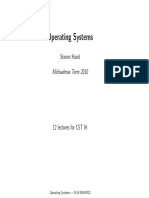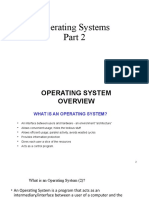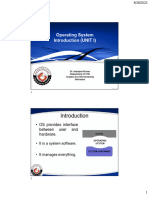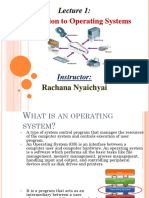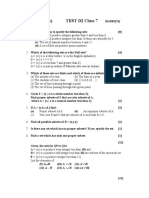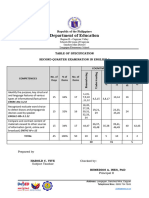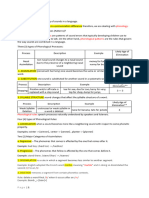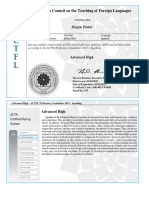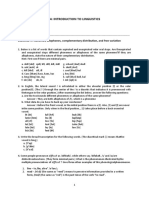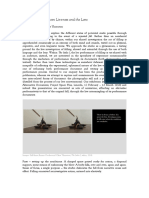0% found this document useful (0 votes)
53 views83 pagesOperating Systems for CS Students
This document provides an overview of operating systems. It discusses the objectives and functions of operating systems, including managing resources, providing common services to programs, and acting as an interface between hardware and software. It outlines the evolution of operating systems from early serial processing systems to modern time-sharing and multiprogramming systems. Major advances discussed include processes management, memory management, information protection and security, and scheduling and resource management. The document also provides an overview of different architectural approaches in modern operating systems such as microkernel architecture, multithreading, symmetric multiprocessing, distributed operating systems, and object-oriented design.
Uploaded by
Googl ComCopyright
© © All Rights Reserved
We take content rights seriously. If you suspect this is your content, claim it here.
Available Formats
Download as PPTX, PDF, TXT or read online on Scribd
0% found this document useful (0 votes)
53 views83 pagesOperating Systems for CS Students
This document provides an overview of operating systems. It discusses the objectives and functions of operating systems, including managing resources, providing common services to programs, and acting as an interface between hardware and software. It outlines the evolution of operating systems from early serial processing systems to modern time-sharing and multiprogramming systems. Major advances discussed include processes management, memory management, information protection and security, and scheduling and resource management. The document also provides an overview of different architectural approaches in modern operating systems such as microkernel architecture, multithreading, symmetric multiprocessing, distributed operating systems, and object-oriented design.
Uploaded by
Googl ComCopyright
© © All Rights Reserved
We take content rights seriously. If you suspect this is your content, claim it here.
Available Formats
Download as PPTX, PDF, TXT or read online on Scribd
/ 83







